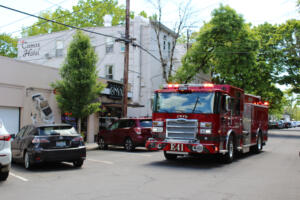The Washington Department of Labor and Industry (L&I) has issued fines totalling $4,800 against the city of Camas for violating safe workplace standards and endangering Camas-Washougal Fire Department (CWFD) firefighters.
The fines and related safe-workplace violations are connected to a Feb. 14 house fire in Camas’ Northwest Prune Hill neighborhood, in which two CWFD firefighters entered a burning, smoke-filled house to rescue a man and his two dogs.
Adam Brice, president of East Clark Professional Fire Fighters, the local firefighters’ union, filed a complaint against the city on behalf of the firefighters in late February, and said the city’s policy of sending only two firefighters to a fire call violated the state’s workplace safety laws.
L&I officials agreed.
On May 10, the department issued three workplace safety violations against the city of Camas.
“The biggest surprise was the fact that we had to go to this length,” Brice said in early May. “It was pretty clear that what happened (on Feb. 14) was a clear violation.”



